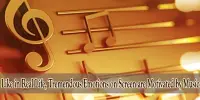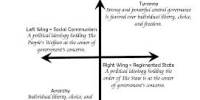According to a recent study, hearing skateboarding noises firsthand can help close the gap between the like and dislike of them.
Skate sounds may also provide people a fresh and new perspective on how to sense and experience the city.
According to the study, skateboarders have specific knowledge of the texture of cities, and imparting this knowledge to the public may assist to diffuse tension. Paying attention to sound can give both sides “sonic” agency over spaces in the city.
Skate sounds, are a common basis of complaint from the general public. However, the participants may find inspiration and excitement in these noises. This has an effect on urban skatepark design and construction. Sound complaints can also result in the addition of “hostile,” expensive, and unsightly infrastructure, such as skate stoppers, to public areas as a disincentive to skateboarders.
The study, in the journal The Senses and Society, was carried out by Brian Glenney, from Norwich University, Max Boutin, from Quebec University and Paul O’Connor from the University of Exeter. The project involved exploring sensory perception of skateboarding and ethnographic work.
Skate sounds reverberate in the body of the skateboarder and echo in the ears of those nearby to the tune of the city’s textures and materials. Those adept at feeling and hearing skate sound thus possess specialized knowledge of the city. And those without a tuned ear find annoyance and a source of complaint.
Dr. Brian Glenney
Researchers found the city’s coarse textures and materials are actively played with by skateboarders. The trained ear of these individuals reacts to this with joy, while some members of the public are upset.
A sound “performance” is created by the skateboard’s many “notes,” “tones,” and “rhythms,” which are a reflection of the skateboarder’s speed, the surfaces they are riding on, and the tricks they choose in relation to those surfaces.
According to the study, what makes skate sound such a potent aspect of the skateboarding experience is the skateboarder’s capacity to control their sound or, conversely, lose control and allow the surroundings create an unanticipated sound.
Dr. O’Connor said, “For some people skate sounds may be merely subjective. For others it is associated with anti-social behavior. Perspective sharing may be the best strategy for finding common ground on skate sound. Rather than resorting to emotion when agreement is difficult to achieve, considering the basis of past associations of skateboarding and its participants may be more fruitful. Skateboarders possess a unique sensory knowledge of the surface materials and textures of the city.”
When asked for a phrase to describe skate sound, participants gave particularly severe adjectives including “beer bottle on beer bottle,” “irritant,” “really harsh,” and “bones on concrete.” They knew skate sound is unpleasant to the public.
They claimed to enjoy their ability to disrupt others’ ears at times, while other times they appeared conscious-stricken, lifting up their boards and avoiding extremely noisy terrain.
Dr. Glenney said, “Skate sound complaints by the public are padded with concerns of physical risk that skateboarders pose to local pedestrians. To skateboarders, skate sound is associated with the physical reward of skateboarding activity and community.”
“Skate sounds reverberate in the body of the skateboarder and echo in the ears of those nearby to the tune of the city’s textures and materials. Those adept at feeling and hearing skate sound thus possess specialized knowledge of the city. And those without a tuned ear find annoyance and a source of complaint.”
“It is the skateboarder who understands the richness of the thick urban crust that pedestrians inattentively walk on every day. Skate sound can help the public to observe these surface conditions in a way never experienced before, using both the vibratory sound and feel from the skate instrument.”
















